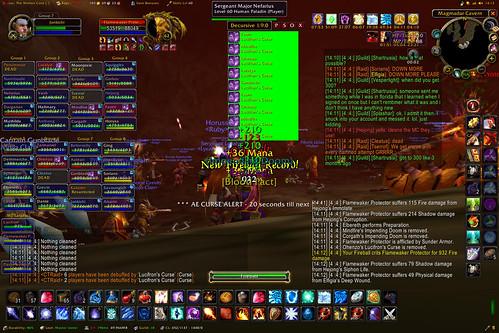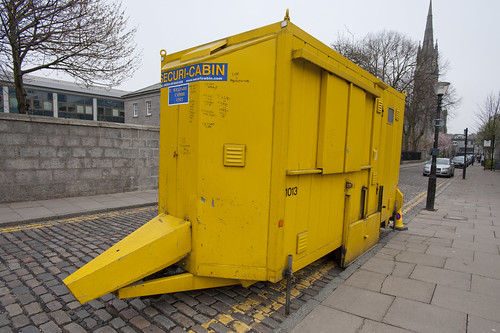
In discussions these days about Augmented Reality — really vintage high technology if there ever was such — I am reminded of Aram Bartholl‘s workshop and project WoW, which is quite relevant. For some reason — I suspect Freemason conspiracy of the highest order — Augmented Reality is making some sort of bid to regain its previous stature as “the future” of, well — something. What gives? (I really want to know.) It had a chance in 1995 or something, as well as lots of half-baked promises, popular magazine articles, and crappy overpriced plastic eyeglasses that’ll enhance your movie watching experiences that you could buy out of those catalogs you find in the backseat pocket on airplanes.
Why has it come back? Okay — now I’m asking the question seriously because it seems like people are spending serious money hiring people and setting up things to get back into this “hold-up-a-screen-and-be-told-what-you-could-read-in-a-tour-guide” kind of high technology. There must be a better way to spend money to create a better world, no? (Answers to this inquiry will be taken seriously. I’m only snarky because the afternoon coffee has taken hold, but good.)
Aram Bartholl’s WoW project explores public space depicted with some of the interface elements of many multiplayer role-playing games. The name derives from World of Warcraft, perhaps the canonical such game. I tried it once, for about two hours, maybe? It just didn’t take hold in the least, but that’s a personal judgement. I don’t necessarily go for that sort of thing.
Besides this point, which is perhaps an allergic reaction to all the hype that surrounded the game a year or so ago — with it being the new golf and crap like that, which I would not wish on any earnest creative effort — there was lots of attention paid to the bloated interfaces of the game. It’s nearly illegible as far as I can tell. But, literacy is learned and in the eye of the literate. If the literacies of the future force one to adjust to “reading” the world as a “dashboard” of this sort:

Well, then it will be a weird world of data points, avatars, 140 character conversations and emoticons.
*shrug*

Aram’s project, in my mind, playfully pokes at the vision of a near future world of such things augmenting our daily, pedestrian realities. I’m a bit skeptical when it comes to the levels of alteration to quotidian life by glasses that tell you compass bearings or map sites of interest. All that kind of stuff that would turn spatial experiences into some kind of database inquiry seem very much different from what I enjoy about the world when it is mixed with humans — curious interpretations of objects and moments that are not salted with uniform resource locators, pop-ups, soft synthesized voices telling me that I’ve got mail or to turn right at the next intersection. Sometimes, I like getting a bit lost, or learning my way about a new place. (That might be my own rationalizing — I get lost with such a frequency that lost is my new found.) I enjoy doing the urban scout adventures in places to look at the world slightly differently, and in a way, I am afraid, no algorithm in some augmented reality telephone-glasses can enhance.
Here’s a video that Aram and his workshop attendees produced for their activities in Gent, Belgium. (Thanks Aram, for the lovely and perpetually relevant project.)
WoW from aram bartholl on Vimeo.
See also Mixing Realities.
Continue reading Design Fiction Chronicles: Aram Bartholl's Vision of Augmented Reality